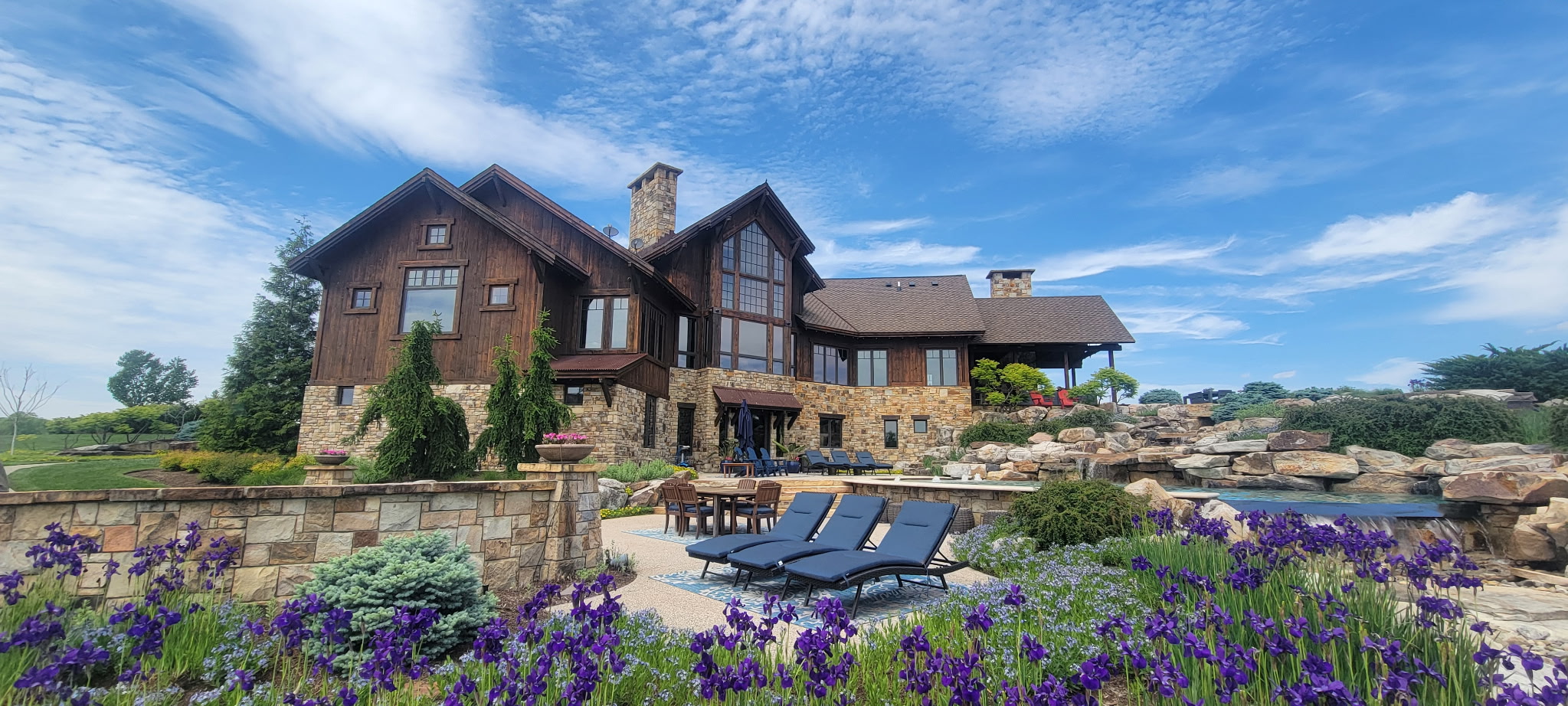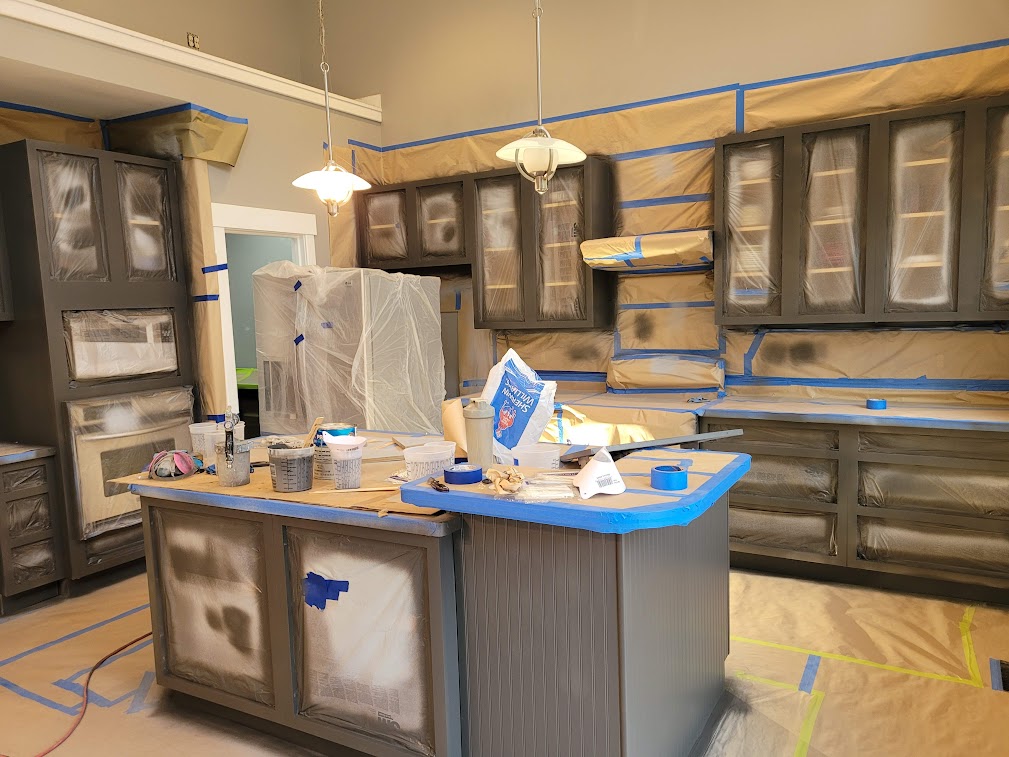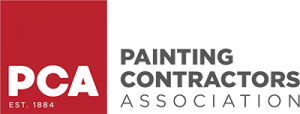When people think of painting, they imagine rollers gliding across walls and bright color transformations. But the reality is far more structured. A professional paint crew in Centerville, OH spends its day on much more than applying color. From safety briefings to meticulous surface preparation, from product-specific applications to detailed cleanups and walkthroughs, the process is deliberate and technical.
This article pulls back the curtain on what truly happens behind the scenes. You’ll see where the time goes, why certain steps seem invisible but matter most, and what makes professional results last longer than DIY or discount jobs.
By the end, you’ll understand what you’re paying for: skill, process, and accountability.
Morning Kickoff – Arrival, Setup, and Safety First

By 7:30–8:00 AM, the paint crew is on-site. The foreman begins with a short safety and scope briefing. This ensures everyone knows their role, the day’s objectives, and specific risks.
Before any paint touches a surface, the team protects the client’s property. Interiors get drop cloths, plastic masking film, and painter’s tape across baseboards, trim, and furniture edges. Exteriors get landscaping covers, ladder stabilizers, and staging equipment.
Typical Setup Tools and Materials
| Tool / Product | Purpose |
|---|---|
| Drop cloths (canvas/poly) | Protect floors, landscaping, and walkways |
| Masking film & tape (3M ScotchBlue) | Keep edges clean, prevent bleed |
| HEPA vacuums | Control dust from sanding or scraping |
| 3M respirators | Protect against dust and paint fumes |
This careful start addresses one of the most common client concerns: “Will painters respect my property?” With a professional crew, the answer is yes.
Surface Preparation – The Foundation for Lasting Results
Prep work consumes 60–70% of the total project time. It’s not glamorous, but it’s what ensures durability.
Interior prep often includes sanding drywall seams, patching nail holes, caulking trim, and priming stains. Exterior prep can mean pressure washing siding, scraping peeling paint, priming bare wood, and sealing gaps around windows and doors. In Centerville, prep is especially critical because of paint adhesion challenges caused by seasonal humidity swings.
Products That Matter in Prep
-
Primers: Sherwin-Williams ProBlock®, Benjamin Moore Fresh Start®
-
Caulks: OSI Quad Max®, Sherwin-Williams SherMax®
-
Patching compounds: 3M Patch Plus®, Ready Patch®
Clients often ask: “Why am I being charged for prep when it doesn’t look like painting?” The answer is simple: without it, the topcoat fails prematurely, and the whole project costs more in the long run.
Product Selection – Why Paint Crews Use Professional-Grade Paints
Professional paint crews don’t pick products off a retail shelf. They use contractor-grade coatings built for durability, coverage, and environmental safety.
-
Interior paints must resist stains, allow scrubbing, and release minimal VOCs (volatile organic compounds).
-
Exterior paints must withstand Ohio’s freeze-thaw cycles, resist fading from UV light, and block moisture penetration.
Frequently Used Coatings:
-
Sherwin-Williams Duration® and Emerald®
-
Benjamin Moore Aura® and Regal Select®
-
PPG UltraLast® and Break-Through®
Professional Tools: Purdy® brushes for cutting-in, Wooster® rollers for broad coverage, and Graco® sprayers for large-scale or textured surfaces.
Clients sometimes wonder: “Can I just buy the same paint myself?” The truth is, most contractor lines aren’t sold in big-box retail stores. And even if you buy them, application expertise is what makes them perform.
Application Techniques – More Than Just Rolling Paint
Once prep is complete, the paint crew moves into application. Techniques vary by surface:
-
Cutting-in with angled brushes creates sharp, straight edges at ceilings, corners, and trim.
-
Rolling delivers even coats across flat wall sections.
-
Spraying is reserved for exteriors, cabinets, or expansive walls where speed and uniformity matter.
Professional paint crews apply two coats of paint, not one. This ensures true color depth, uniform sheen, and protection against wear.
Specialty Paint Applications
-
Enamel paints (Sherwin-Williams ProClassic®, Benjamin Moore Advance®) for trim and doors
-
Elastomeric coatings for exterior stucco or masonry
-
Scuff-resistant paints for high-traffic hallways and commercial interiors
A common concern: “Do painters really apply two coats or just one?” A reputable paint crew guarantees two coats, because that’s what produces lasting results.
Midday Coordination – How Crews Work Efficiently
Efficiency is about coordination, not rushing. By midday, different paint crew members tackle different tasks. One cuts in trim while another rolls large sections. Others may start priming doors or sanding dried areas.
The foreman monitors progress and communicates with the client as needed. Breaks follow OSHA guidelines, and dry times are staggered to avoid downtime.
This process reassures clients asking: “Will the job take longer than promised?” The answer: a well-managed paint crew keeps projects on track without cutting corners.
Afternoon Detail Work – Trim, Touch-Ups, and Finishes
Afternoons are dedicated to detail. Trims, baseboards, doors, and accent walls get high-durability enamels. Painters double-check for roller marks, drips, or uneven coverage.
Small touch-ups are handled immediately instead of leaving them for the end. A second coat is applied where necessary, ensuring consistency across sheen and color.
Professional crews take pride in the fact that by the time the foreman arrives for a final walkthrough, the space already looks polished.
Cleanup Protocols – Respecting the Property
Cleanup happens daily, not just when the project ends.
-
Brushes and rollers are washed or wrapped for reuse.
-
Floors and surfaces are vacuumed with HEPA systems.
-
Trash and debris are bagged and removed.
-
At project completion, masking tape and protective coverings are carefully removed.
Cleanup Comparison
| Stage | Tasks Completed |
|---|---|
| Daily Cleanup | Tools washed, trash removed, floors vacuumed |
| Final Cleanup | Tape removed, furniture returned, leftover paint labeled and stored |
Clients ask: “Will my house be left messy after painting?” With a professional crew, the answer is no. Paint crews are trained to leave spaces cleaner than they found them.
Final Walkthrough – The Client’s Inspection
Once painting and cleanup are finished, the foreman meets with the client. Together, they inspect walls, trim, and all painted surfaces. Any imperfections are noted on a punch list and corrected before the crew leaves.
The foreman also explains warranty terms—often 2 to 5 years depending on the service—and gives the client leftover paint for touch-ups. Some companies also provide before-and-after photos as documentation.
This step ensures accountability, answering the concern: “What if I see issues after the crew leaves?”
Behind-the-Scenes Work Clients Don’t See
A lot happens off-site that clients never witness:
-
Scheduling logistics: ordering paints, scheduling crews, and watching the weather forecast.
-
Safety certifications: OSHA training, fall protection, and lead-safe practices.
-
Insurance and liability coverage: protecting both crew and client in case of accidents.
Clients often ask: “What happens if something goes wrong?” The answer: professional painters are insured, trained, and equipped to handle unexpected challenges.
Why Hiring a Professional Paint Crew Is Worth It
Cheap jobs often cost more over time. A single-coat DIY project might peel in 2 years, while a professional paint crew delivers results that last 7–10 years with proper prep and premium products.
Cost Comparison Over Time
| Type of Job | Initial Cost | Lifespan | Cost Over 10 Years |
|---|---|---|---|
| DIY / Low-Cost Contractor | Low | 1–3 years | High (multiple repaints) |
| Professional Paint Crew | Higher upfront | 7–10 years | Lower (due to durability) |
In Centerville, OH, hiring a professional isn’t just about looks—it’s about protection. Professional coatings resist moisture, UV damage, and seasonal wear, saving homeowners thousands in the long run.
People Also Asked (FAQ)
What does a professional paint crew do in a day?
They start with setup, move into prep, apply premium products, focus on detail work, clean up daily, and finish with a walkthrough.
How long does it take painters to finish a house?
Interiors usually take 3–5 days, while exteriors can take 5–7 depending on prep needs.
Do painters move furniture for you?
Yes, most crews move larger items by agreement, but clients should clear valuables and breakables.
What kind of paint do professionals use?
Contractor-grade coatings like Sherwin-Williams Duration®, Benjamin Moore Aura®, and PPG UltraLast®.
Do painters always use two coats of paint?
Yes, two coats ensure even coverage and durability.
How do painters protect furniture and floors?
Drop cloths, masking film, and careful taping are standard.
Why does prep take longer than painting?
Because prep ensures adhesion, smoothness, and long-term durability.
Do painters clean up after themselves?
Yes, cleanup happens daily and at project completion.
What tools do professional painters use?
Purdy brushes, Wooster rollers, Graco sprayers, HEPA vacuums.
Are professional painters insured?
Yes, reputable paint crews carry liability and worker’s compensation insurance.
Authentic Day That Makes All the Difference
An authentic day with a paint crew in Centerville, OH isn’t just about painting. It’s about process. From arrival to walkthrough, every step is designed to protect property, maximize paint adhesion, and deliver lasting results.
What may look simple is actually a technical, product-driven, detail-focused routine. That’s why professional paint jobs not only look better—they last years longer.
If you’re ready to experience the difference, schedule your own professional paint crew and see firsthand how a behind-the-scenes process delivers visible, lasting value.




